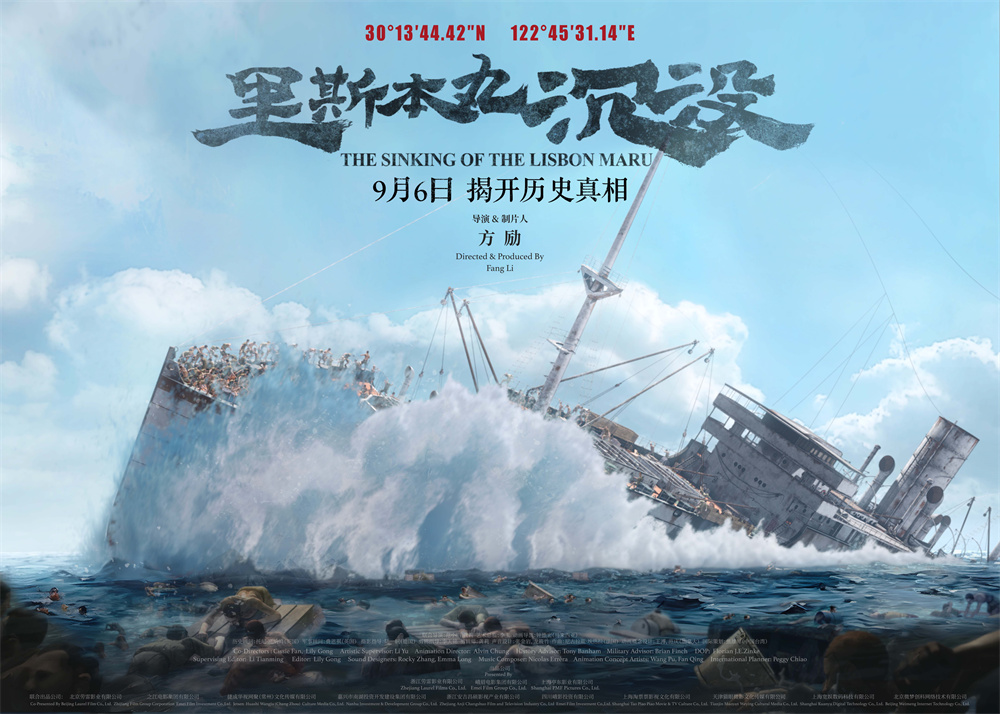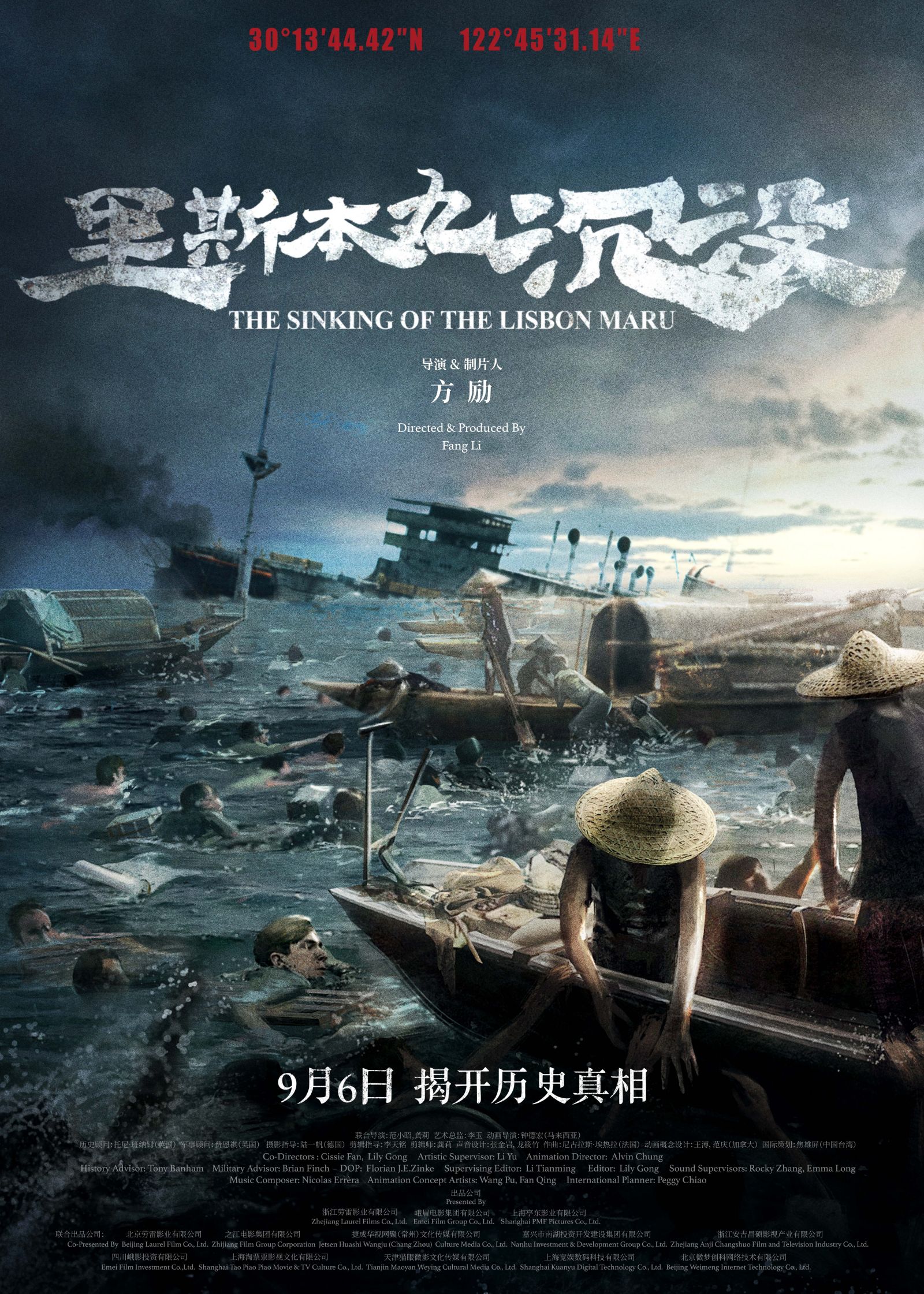
The documentary "The Sinking of the Lisbon Maru" uncovers a chapter of history that has been "sunk" for 82 years: in December 1941, the Battle of Hong Kong ended in 18 days with the defeat of the Allies, and the Japanese army occupied Hong Kong. In October of the following year, the Japanese requisitioned the cargo ship "Lisbon Maru," intending to transport 1,816 British prisoners of war to Japan. However, while passing through the waters near Dongji Island, Zhoushan, the cargo ship was struck by a torpedo from a U.S. submarine and began to sink slowly. To prevent the prisoners from escaping, the Japanese sealed them in the ship's hold and even shot those who attempted to break out. In this critical moment, 255 Chinese fishermen from nearby islands braved the gunfire to return in their small boats, successfully rescuing 384 British POWs. Unfortunately, an additional 828 lives were lost - either shot by the Japanese, swallowed by the waves, or sunk along with the ship, ultimately resting on the ocean floor of the East China Sea.

Poster for "The Sinking of the Lisbon Maru"
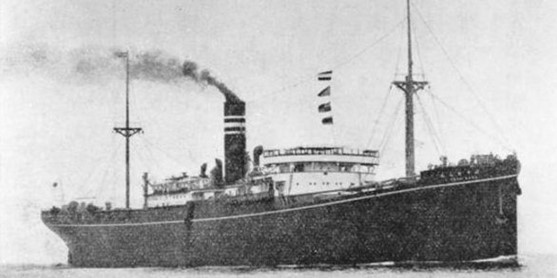
Photo of the Lisbon Maru
In 2013, Fang Li joined the filming of "The Last Farewell" on Dongji Island as a producer, during which he heard the story of the Lisbon Maru from local residents. While many perceive Fang as a filmmaker, few know that he has over 40 years of research experience in Earth exploration and marine investigation. Thus, the curiosity of this "science and engineering guy" was sparked. In 2016 and 2017, he led a professional team to conduct surveys and ultimately confirmed the location of the Lisbon Maru.
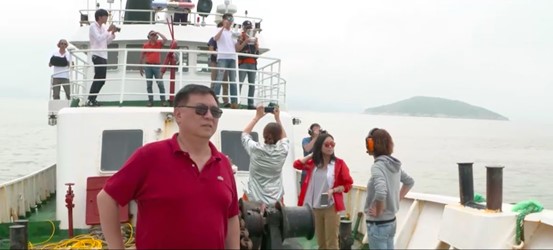
Fang Li and team at sea during the survey
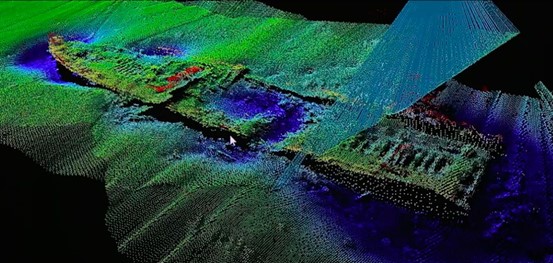
Sonar detection image
At this point, Fang's sense of mission as a filmmaker was ignited. Why had such an important event become a largely unknown footnote in history? The stories of the "Titanic sinking" or the "Dunkirk evacuation" are widely known because films like "Titanic" and "Dunkirk" resonate with audiences.
This prompted Fang to decide that he would recover the story of the Lisbon Maru from the depths of history through film, hoping to share it with a wider audience: "There’s no one else who understands underwater imaging search and investigation as well as film, except me. Although I have never made a documentary film before, I have at least an idea, understanding what imagery means. So I kept telling myself, you've got to do this; if you don't, you'd be a historical sinner." Over the next seven years, Fang led the production team to visit the United Kingdom, Canada, Japan, and beyond, searching historical materials, interviewing witnesses and their descendants, and consulting experts to finally complete "The Sinking of the Lisbon Maru."
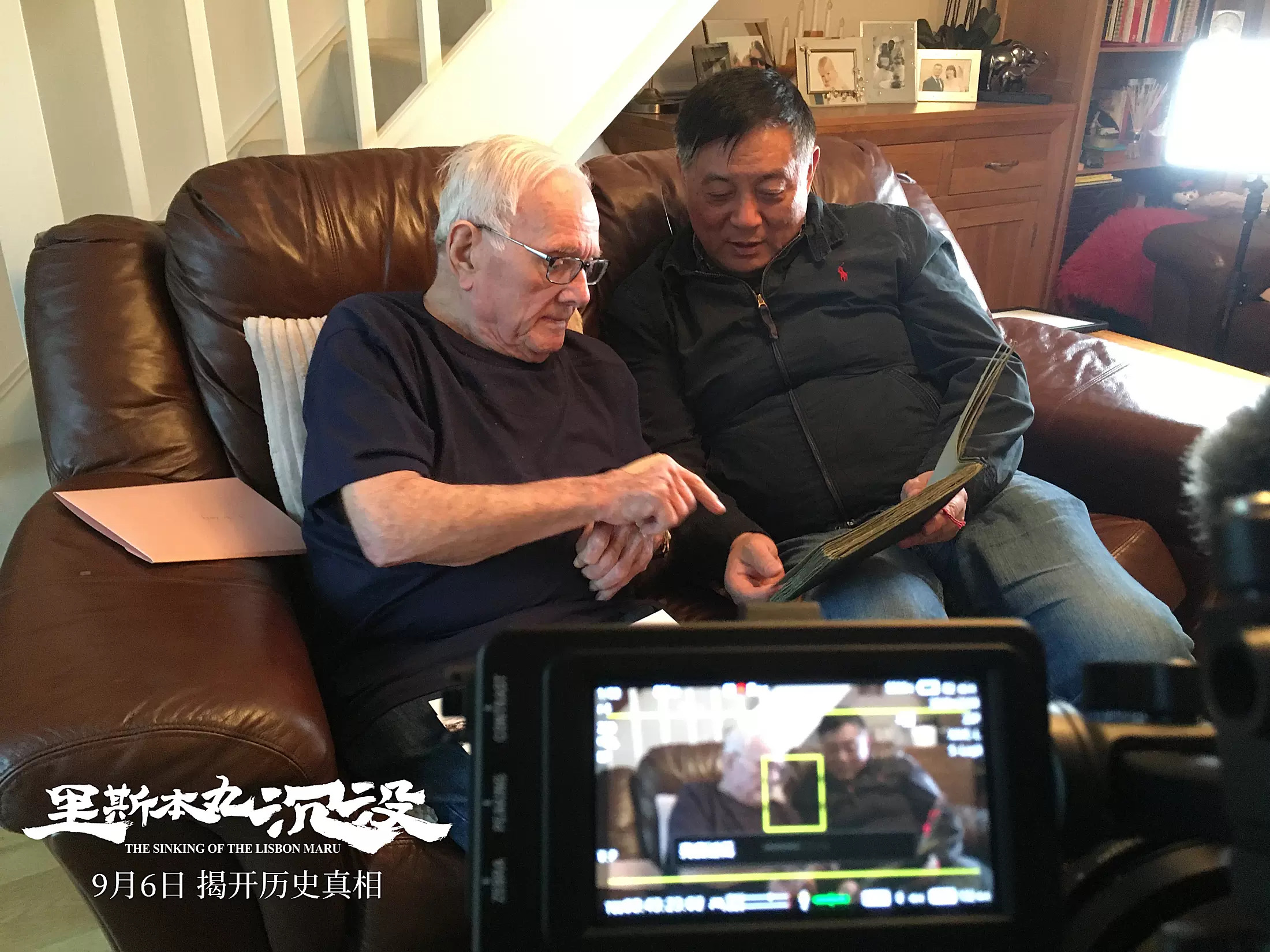
Fang Li interviewing Lisbon Maru survivor Dennis Morley

Fang Li interviewing Lisbon Maru survivor William Beningfield
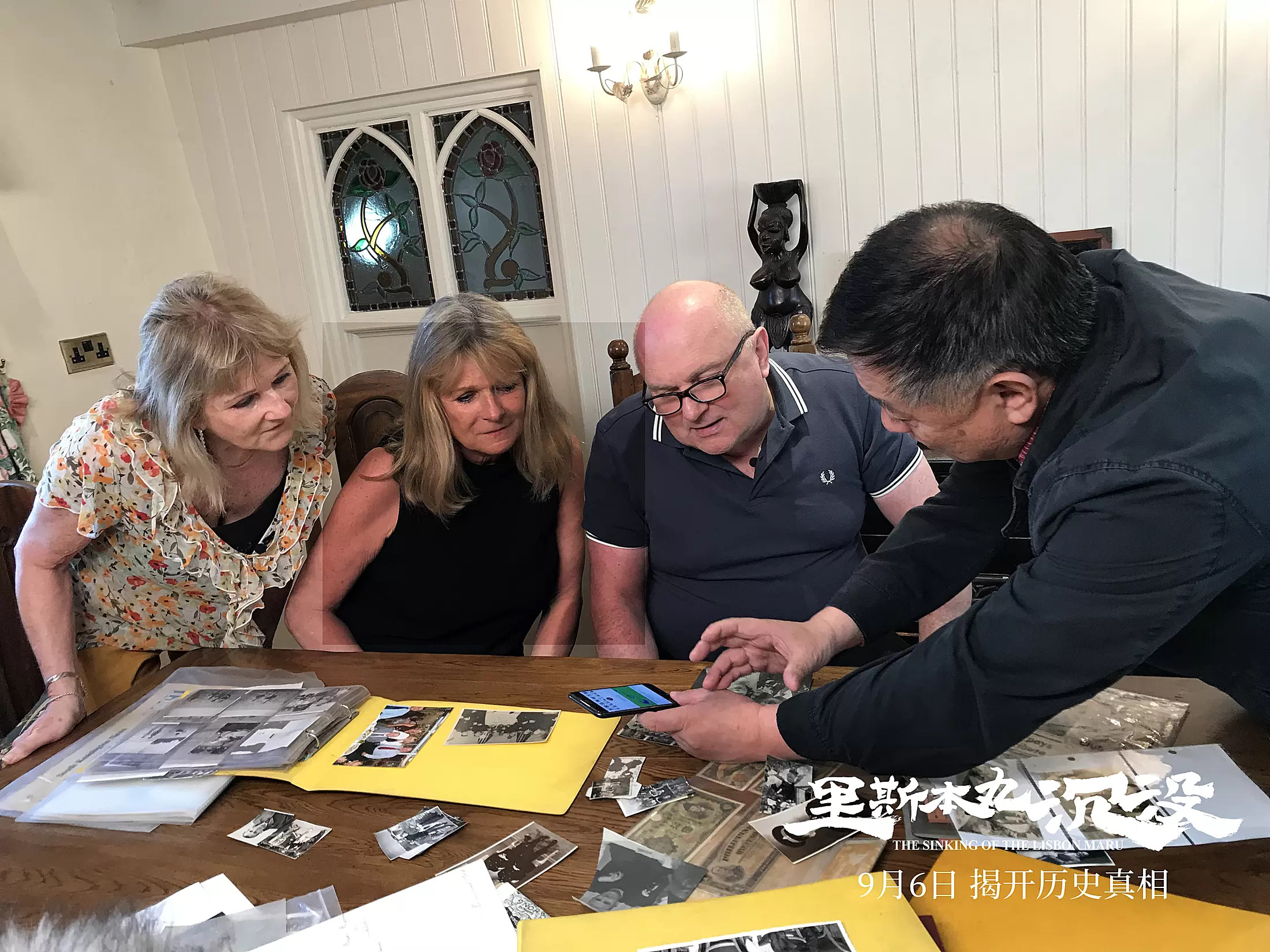
Fang Li interviewing descendants of witnesses in the UK
The film begins with the search for the sunken ship, following Fang's journey and interrogation of historical truths. The last two living survivors of the Lisbon Maru—Dennis Morley and William Beningfield—provide a micro perspective through their oral accounts, helping to reconstruct history.
Through their detailed recollections, viewers feel as though they are inside the dark, airless hold of the ship, enveloped by desperate groans and acrid smells. The harrowing experiences of these "boys forgotten by Churchill" did not leave a significant mark in the mainstream narrative of World War II, and they even avoided confronting these traumatic memories themselves. Yet Fang's interviews revived these shadowy "memories of the glimmer" overlooked by grand narratives, enriching the historical account and adding emotional depth to aspects often hard to reach in macro narratives.
For instance, witnesses recalled that as the cargo ship sank, dozens of soldiers trapped inside began to sing "It's a Long Way to Tipperary," making the despair of the young warriors in the face of death, as well as their unresolvable longing for home, feel particularly poignant and profound.
The film then continues to question history — why did the U.S. submarine USS Swordfish attack the Lisbon Maru? When they realized that they were putting over 1,800 Allied prisoners of war on the brink of death, what turbulence did they experience within? And why did the Japanese captain of the Lisbon Maru choose to imprison the prisoners in the hold, leaving them to face such desperation? Fang traced the descendants of the U.S. submarine crew and the Japanese captain. Through their statements, a complex portrait of humanity gradually unfolds: years later, a guilt-ridden American soldier sought out survivors to express his heartfelt apologies, yearning for emotional redemption; while the Japanese captain remained silent about those past events, using "forgetting" as a shield to cover up his complicit behavior in the dark history. These two distinct choices of reflection and avoidance reveal the complicated nature of humanity and morality behind war.
Finally, the focus returns to the waters off Dongji Island, where over 90-year-old witness Lin A-gen and the descendants of other rescuers recall the fishermen's heroic efforts to rescue the POWs. As filming advisor Ryan Fenqi noted, this history demonstrates both the worst and best sides of humanity.
Fang believes that watching on smaller screens is primarily about information gathering, whereas watching on the big screen seeks immersion. He aims to use audiovisual elements to appeal to the senses and emotions, aiming to touch and envelop the audience with imagery. The film employs highly stylized animated segments to recreate the sinking scenes, utilizing 3D modeling to craft dynamic depictions of warships, cargo ships, the ocean, and the sky, while also creating static images of characters that convey weakness and despair. Simultaneously, it intentionally strives for a raw quality, seeking the texture of history with pencil-like strokes.
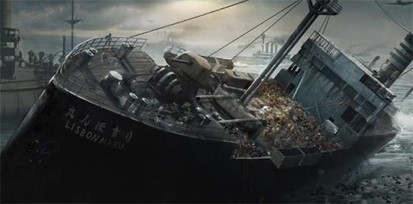
Animation concept art for "The Sinking of the Lisbon Maru"
In terms of music, a cross-border creative team composed several distinctive tracks for the film, which not only serves the narrative but also deepens the emotional layers and thematic expression of the movie. For example, the song "Long Way from Home," created by Dutch artist Jerry, conveys the longing and yearning for loved ones, echoing the sentiments expressed by the descendants of witnesses in the film.
At last, the memory puzzle regarding the Lisbon Maru incident is finally complete. In Fang Li's words, this is a "rescue interview." As time goes by, the witnesses have been passing away, and around 2020 and 2021, Dennis Morley, William Beningfield, and Lin A-gen all passed before the film premiered. The memory of this history is likely to vanish with the lives of those who experienced it. Fang felt an urgency to document this history because more than 1,800 families of British POWs wish to see the experiences of their forebears recognized, while over 200 families of Zhoushan fishermen hope their ancestors’ good deeds and acts of bravery are remembered.
During an interview in the UK, a journalist once asked Fang Li - why should a Chinese person tell the story of British prisoners of war? Fang responded that this event happened right at China's doorstep, and our ancestors were witnesses, participants, and rescuers, thus this history naturally should be narrated by Chinese. However, "The Sinking of the Lisbon Maru" does not focus solely on the altruism of Chinese fishermen; rather, it questions history from diverse perspectives, narrating a more complete, universal story that transcends ethnicity and time, evoking shared emotional experiences across humanity.
"The Sinking of the Lisbon Maru" is not the first piece to revisit this chapter of history. Prior to this, media outlets like Zhoushan Television and Phoenix TV covered it, and British scholar Tony Banham authored "The Sinking of the Lisbon Maru: Britain's Forgotten Wartime Tragedy," but the attention garnered was limited. In June of this year, after attending the film's premiere at the Shanghai International Film Festival, Banham remarked, "I never imagined when writing my book that 20 years later, a documentary film that is the most shocking, resonant, and empathetic of my life would be presented like this. Thank you all for your attention to this history." This work, grounded in real history, moving audiences through auditory and visual imagery, and touching hearts through emotional power, constructs a cross-border cultural memory. The ethical value of remembering this history lies in its reminder that amidst current conflicts and challenges, we should reflect on the traumas and suffering caused by war and reaffirm the value and significance of peace and cooperation.

